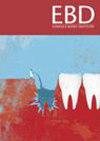Second chances for smiles: a systematic review of implants in failed sites
IF 2.3
Q3 Dentistry
引用次数: 0
Abstract
It has been proven that implants are predictable substitutes for replacing teeth. However, the effectiveness and survival of implants placed in sites previously affected by failure, as well as the optimal treatment strategies, remain poorly defined. This systematic review aimed to evaluate implant survival and peri-implant health in such cases, focusing on comparing immediate versus delayed implant placement and the role of augmentation. Four electronic databases were systematically searched, and meta-analyses were conducted with subgroup analyses (PROSPERO CRD42024548610). Of 1,798 records identified, 24 studies met the inclusion criteria. The 1-year survival rate for implants placed as replacements was 96.7% (95% CI: 92.8–99.3%). No significant differences were found between immediate and delayed placement (P = 0.31), or between immediate and delayed augmentation (P = 0.85). Although implants with immediate augmentation showed a higher survival rate (97.6%, 95% CI: 93.4–99.9%) compared to those with delayed augmentation (91.7%, 95% CI: 83.4–97.5%), this difference was not statistically significant (P = 0.26). Peri-implant health outcomes, including marginal bone loss, were consistent across subgroups. Replacing failed implants is often an attractive treatment option. While implants placed as replacements generally have lower survival rates compared to primary implants, immediate implant placement remains a viable option when adequate bone volume is present. The review supports the effectiveness of implant re-placement, with generally favourable. Dental implants are widely used for replacing missing teeth, but implant failure is a known complication. Understanding the outcomes of implants placed in sites where implants have failed is important as this situation can present challenges, such as insufficient bone or altered soft tissue conditions. This article provides data on the survival and health outcomes of implants placed in these failed sites, which may provide benefit to clinicians in these scenarios.微笑的第二次机会:对失败部位的植入进行系统审查。
目的:种植体已被证明是可预测的替代牙齿的替代品。然而,在先前受失败影响的部位放置植入物的有效性和存活率,以及最佳的治疗策略,仍然没有明确的定义。本系统综述旨在评估这种情况下种植体的存活和种植体周围的健康,重点比较立即与延迟种植体放置和隆胸的作用。系统检索4个电子数据库,采用亚组分析(PROSPERO CRD42024548610)进行meta分析。在确定的1798项记录中,有24项研究符合纳入标准。结果:种植体作为替代物的1年生存率为96.7% (95% CI: 92.8 ~ 99.3%)。即刻和延迟置入之间无显著差异(P = 0.31),即刻和延迟置入之间无显著差异(P = 0.85)。虽然即刻隆胸的种植体生存率(97.6%,95% CI: 93.4-99.9%)高于延迟隆胸的种植体生存率(91.7%,95% CI: 83.4-97.5%),但差异无统计学意义(P = 0.26)。种植体周围的健康结果,包括边缘骨质流失,在亚组之间是一致的。结论:更换失败的种植体通常是一种有吸引力的治疗选择。虽然作为替代物放置的种植体通常比原植体存活率低,但当存在足够的骨容量时,立即放置种植体仍然是一种可行的选择。该综述支持种植体置换的有效性,总体上是有利的。临床相关性:牙种植体被广泛用于替换缺失的牙齿,但种植体失败是已知的并发症。了解植入失败部位的结果很重要,因为这种情况可能会带来挑战,例如骨不足或软组织状况改变。本文提供了在这些失败部位放置植入物的生存和健康结果的数据,这可能为临床医生在这些情况下提供益处。
本文章由计算机程序翻译,如有差异,请以英文原文为准。
求助全文
约1分钟内获得全文
求助全文
来源期刊

Evidence-based dentistry
Dentistry-Dentistry (all)
CiteScore
2.50
自引率
0.00%
发文量
77
期刊介绍:
Evidence-Based Dentistry delivers the best available evidence on the latest developments in oral health. We evaluate the evidence and provide guidance concerning the value of the author''s conclusions. We keep dentistry up to date with new approaches, exploring a wide range of the latest developments through an accessible expert commentary. Original papers and relevant publications are condensed into digestible summaries, drawing attention to the current methods and findings. We are a central resource for the most cutting edge and relevant issues concerning the evidence-based approach in dentistry today. Evidence-Based Dentistry is published by Springer Nature on behalf of the British Dental Association.
 求助内容:
求助内容: 应助结果提醒方式:
应助结果提醒方式:


